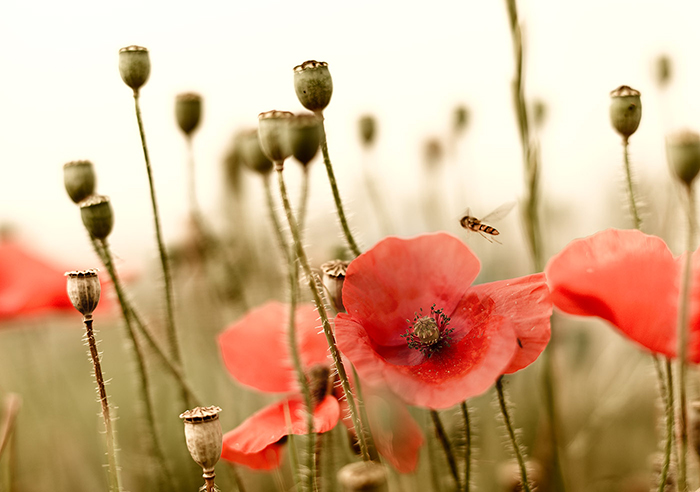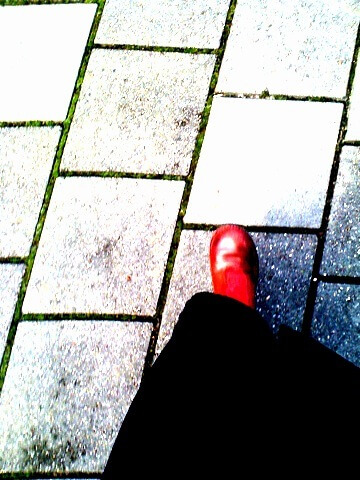The landscape of West Flanders still shows the gaping wounds of the First World War. However Ypres and Poperinge also offer great (culinary) fun. Ten hotspots for war and peace.
1. In Flanders Field Museum
In chronological order the museum presents the events that took place between 1914 and 1918 in the West Flanders front region. Of the invasion of Belgium and the first months of the mobilization, the four years trench war in the Westhoek – from the beach of Nieuwpoort to the Leie in Armentières -, the end of the war and the permanent remembrance ever since. The focus is the human experience.
Stories are told in person by actors on video’s and they tell moving stories about fleeing to Holland, the many casualties in the fields or the famous truce of 1914 in which German, French, Belgian and English soldiers sang Christmas carols together and exchanged small presents. With a special poppy bracelet, symbol of this war, you can listen at various spots to customized stories. The museum tries to make the experience as personal as possible and visitors can, if the leave their surname at the entrance, find out if and how many people with the same name died in Flanders fields. Grote Markt 34, Ypres
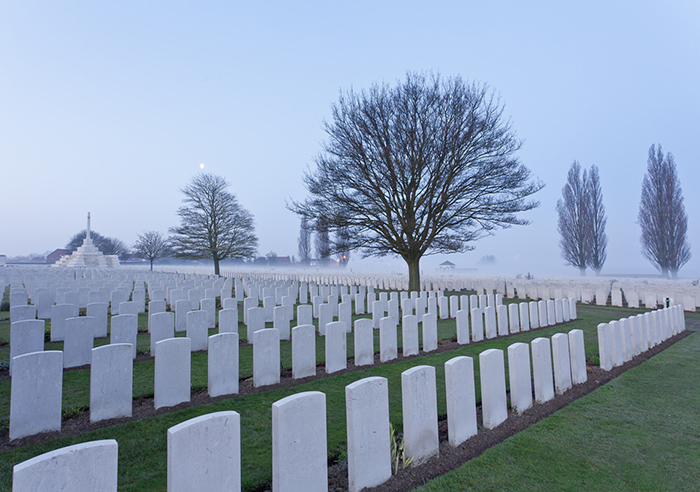
2. Brewery Kazematten
“Kazematten” are originally military buildings like bunkers made for defense. In Ypres Koen Hugelier is the brew master in this small intimate brewery in a former bunker where he is responsible for the production of local beers. The brewery is property of Maarten Ghequire and Julie Depypere, the daughter of Hans Depypere, of the famous brewery Sint Bernardus.
The brew master is a very passionate storyteller, when the history of the brewery is concerned. Ask him about the ingredients and the way the beer is brewed, and he loves to tell you. And of course you are allowed to taste the Wipers Times, named after the newspaper that during the war was printed in the bunker and was distributed to the British soldiers in the trenches. Houten Paard 1 – Ypres
3. Kaffee Bazaar
And for whom beer tasting is just the beginning, there is Kaffee Bazaar. A very friendly pub with a 100 different beers. A local place where people mingle and don’t mind a talk. They have a lovely terrace surrounded by the gardens of the neighbors. It is a bit out of the touristic route. The service is wonderful. Just take note that they are only open from Thursday through Sunday. Boomgaardstraat 9, Ypres
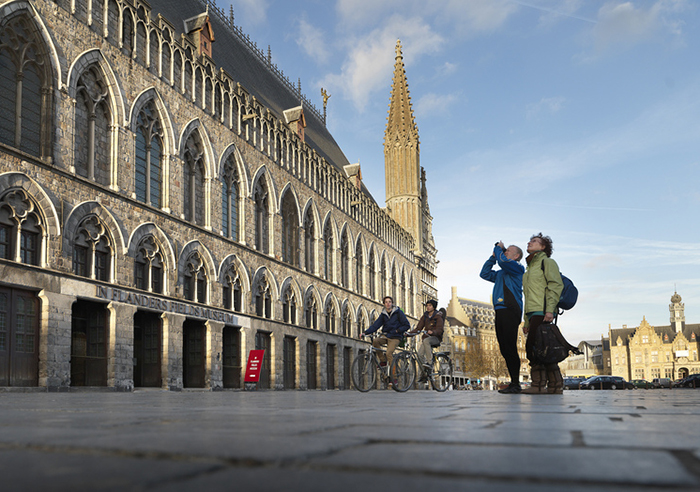
4. Death row cells
World War 1 was a heroic one. War would make a hero out of you. In the beginning young men were excited to be part of this national showdown and marched off singing to meet the enemy. Soon they were to find out there was nothing heroic at being at war. It was a dirty war where the boys were waiting in wet trenches between rats and devastating grenades.
Whoever got hurt, was patched up again and sent back. Shell shock was an unheard of. An unknown phenomena. In order to maintain a high moral standard, boys deserting the army were sentenced to death. Even the boys that had joined up as volunteers. The executioner were appointed from their own division. Death sentence was also given for falling asleep while being on guard or for cowardice. In Poperinge you can visit death row and the former execution place. In one of the cells you can read writings on the wall and watch a video of a man playing out to be a soldier sentenced to death. It shows the madness of war. Guido Gezellestraat 1, Poperinge
5. Sleep in Talbot House
Forget the war. Just for a litlle while. Come to Talbot House in Poperinge. This was the place where British soldier regardless of their rank could have a rest. Two chaplains, Neville Talbot and Philip Clayton started this club house in 1915 en it was equiped with a library and a church in the attic. Today the house is for a large part still as it was then. There is a large garden to the back of the house where you can stroll and an English housekeeper sees to it that visitors get a cup of tea.
It is possible to stay overnight in the historic bedrooms or in one of the 3 gardenrooms. Though it was not open to women at the time, some like piano-player Jeanne Battheu or the nurse Alison MacFie spent time at the house and rooms have been named after them. Gasthuisstraat 43, Poperinge
6. Lunch in lounge restaurant Passage
And if you happen to be in Poperinge, you might as well have lunch at lounge restaurant Passage. A beautiful building with high ceilings and a garden that borders the city park. The cooks do miracles with fish, tabbouleh and gravy made of paprika and tomato. Or would you rather fancy beef with green asparagus? A menu starts at €39. Veurnestraat 11-13, Poperinge
7. Hotel Ariane
It is like being in Great-Britain when you stay the night in hotel Ariane. This luxury hotel situated on the -translated – Slaughterhouse street across form the Abattoir, is popular with Brits in search of ancestors who died in the battlefields. The hotel is surrounded by gardens and a pond. By the way, not to worry, the only thing not surviving the Abattoir nowadays, is the beer since it is a very nice bar.
“We come every year to Ariane”, says 87-year old Archie Lloyd from Manchester. He visits the grave of an uncle who died here in 1916. Despite the names of Slaughterhouse and abattoir, the Ariane is a lovely place in a wonderful surrounding. Slachthuisstraat 58, Ypres
8. Have dinner at the Fonderie
He is a bit sorry we couldn’t spend more time at his restaurant, says Xavier. So little time to cook for us and to enjoy his lovely restaurant. But we do want to hear and see the Last Post Ceremony at the Menen Gate. So there is indeed little time to enjoy a dinner at the former iron building De fonderie. The restaurant is based upon the idea of a Parisian brasserie: a home brewery where you can eat and drink. Nowadays De Fonderie is a trendy restaurant with fresh products from the market and a Mediterranean kitchen. and although we do not recommend it: you can eat extremely well in limited time. Polenlaan 3 Ypres
9. Last Post Menenpoort
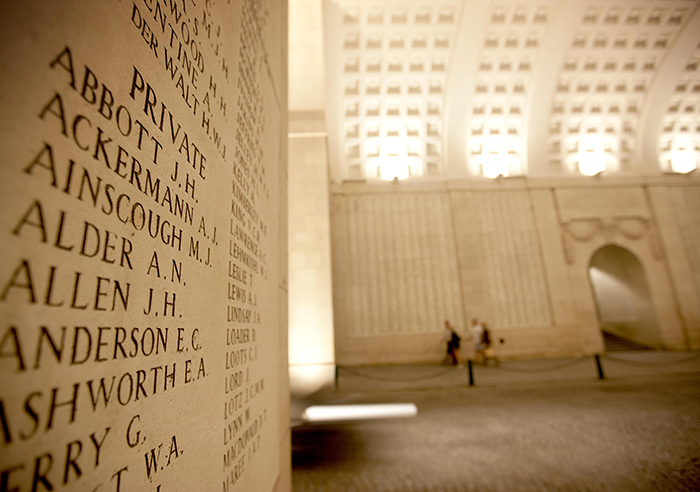
The last Post was originally meant as the wind-up of the day after the inspection of the troops. Nowadays the Last Post is used during military commemorations and funerals. In Ypres the Last Post is every day at eight pm under the Menen Gate. It is done by the members of the Last Post Association as a homage to the soldiers who died there and could not be found or identified. It has the names of 55,000 British and Commonwealth soldiers inscribed on its walls.
The gate was built in 1927 and the Last post is held ever since 1928. Only during the occupation in World War II between May 1940 and September it was interrupted. Sometimes choirs or singers perform there. It is very impressive to be there with people from all parts of the world and still, a century later, get goose bumps.
10. Restaurant Souvenir
“Happiness is not an experience but a souvenir”, I read on the back of the business card I receive when I leave the restaurant. and it is certainly true where this restaurant is involved. Put an Icelandic cook and a former television producer together in Scandinavian desin. Ad organic products, sustainable seafood and a 5 course menu and you and up having a souvenir. There is only one menu a day with alterations for vegetarians or people with an allergy.
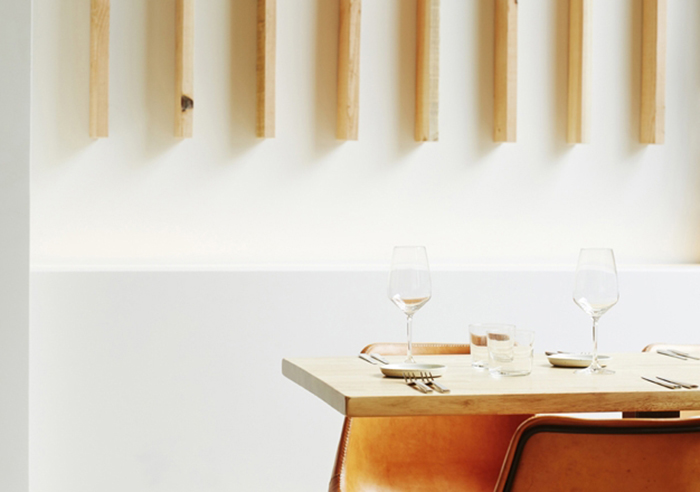
The cook comes to your table with every course to personally explain the dish. The hostess advises the wines to along with the food. We had carrots with goat cheese, cod with fennel and cabbage. Wild asperagus with sunflower seeds, tenderloin with spring vegetables and a dessert of strawberry and lemon. And everything is serve as a piece of art. We experienced a culinary highlight. To be honest: make food not war should be their slogan. Souvenir pacifies. Menu for 5 courses: €55. Surmont de Volsbergestraat 12, Ypres
Tekst: Anneke de Bundel – Beeld: Toerisme Ieper
More Ypres? Do read:
Practical:
- It has been a century since 1914, so many activities are planned this year.

